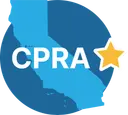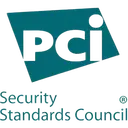Vendor due diligence is essential in mitigating risks and securing your business operations. With mounting regulatory demands and shifting market conditions, understanding how to assess vendor risks and vendor compliance is more critical than ever.
This blog post is your starting point for integrating due diligence into your business practice, offering strategies without disclosing specific checklist items too early.
Key takeaways
- The Vendor Due Diligence process (VDD) is essential for assessing the financial stability, legal status, operational integrity, regulatory compliance, and reputation of third-party vendors, which helps with managing risk and ensuring informed decision-making.
- The scope of VDD is broadening, with Environmental, Social, and Governance (ESG) considerations and data protection increasingly becoming integral to assessing vendor risks, due to stricter regulations like GDPR, HIPAA, and CCPA.
- Successful vendor due diligence involves continuous management of risks, including categorizing vendor relationships, focusing more on high-risk vendors, using technology and automation for more efficiency, and being prepared with a comprehensive due diligence checklist and consistent monitoring post-onboarding.
Understanding vendor due diligence: An overview
Vendor Due Diligence (VDD) forms the basis of a secure vendor selection process. It helps you assess third-party vendors in terms of:
- Financial risk and stability
- Legal standing
- Operational robustness
- Regulatory compliance
- Reputational risk vendors
This process provides a solid foundation for informed decision-making, effective risk management, and enhanced operational efficiency (including business continuity).
The due diligence process primarily includes regulatory compliance assessments and, depending on the situation and your organization’s risk appetite, may also include:
- Systematic background checks
- Financial analysis
- Legal review
Together, these steps are crucial for an unbiased analysis of a particular vendor. Conducting thorough due diligence safeguards will help your organization uncover hidden risks and preserve your reputation. After all, your vendors’ actions could significantly impact your company’s reputation.
The expanding scope of vendor due diligence requirements
The scope of vendor due diligence process continues to evolve, adapting to the ever-changing business landscape.
For example, one critical development is the incorporation of Environmental, Social, and Governance (ESG) considerations into vendor due diligence. ESG factors have become a significant part of vendor risk assessments, as they can impact operational, regulatory, and reputational factors. From managing natural resources to observing ethical labor practices, these factors can significantly influence a vendor’s reputation and operational efficiency.
Another crucial expansion of vendor due diligence is data protection. With regulations like GDPR, HIPAA, and CCPA becoming more stringent, businesses are emphasizing vendor due diligence to guard against breaches involving Personal Health Information (PHI) and Personally Identifiable Information (PII).
As the landscape of vendor risk management continues to evolve, it is incumbent upon organizations to similarly evolve their approach to vendor due diligence to keep pace with these changes.
Who conducts the vendor due diligence process?
Conducting vendor due diligence has a variety of approaches. Depending on your internal expertise, resources, and risk priorities, you can opt for in-house, outsourced, or hybrid strategies for vendor due diligence.
In-house vendor due diligence allows you to verify the vendor’s claims directly; identifying unethical practices and verifying regulatory compliance. On the other hand, outsourcing the process leverages external expertise, freeing up your internal resources to focus on risk mitigation.
Hybrid strategies offer the best of both worlds, combining in-house, shared, and outsourced methods for a comprehensive risk management program. This approach ensures a tailored and robust risk management plan that suits your organization’s unique needs.

Continued reading
Your guide to comprehensive risk management
Vendor risk is just one piece of the puzzle. See how you can build a cohesive compliance and risk strategy.
Key components of a vendor due diligence checklist
Vendor due diligence is a key step in your procurement process. It is done at the start of a new vendor relationship, and continually, as an ongoing best practice:
- Initial due diligence — As it sounds, this is when you first meet with a vendor and verify that they’ll meet your needs prior to an engagement. This initial discussion should help identify risk and determine if the vendor would be a good partner for your organization and if they meet your strategic and financial standards.
- Ongoing due diligence — Continuous monitoring should be top of mind when you work and build a relationship with a third-party organization. You should continuously monitor and analyze your vendors, even if they have already been contracted. One example of continuous monitoring would be to incorporate this as a key step in your annual compliance assessments. However, the frequency of analysis can be dependent on the risk level of the vendor.
The due diligence checklist
A vendor due diligence questionnaire should include:
- Basic company information, such as a business certificate or license
- Details about executives and board members
- Questions about politically exposed persons (PEPs) or individuals on law enforcement lists
- Location
- Character references (if applicable)
- Incorporation documents
- An overview of the corporate structure
This checklist guides the sales process of conducting comprehensive and consistent evaluations of prospective vendors and understanding any inherent risk in working with these organizations.
Financial due diligence forms another crucial part of the checklist. It involves reviewing the vendor’s financial information, including:
- Compensation structure
- Major assets
- Loans and obligations
- Balance and accounting sheets
- Important tax documents
This is done to assess their financial stability. Publicly traded companies should be monitored through quarterly filings, while private companies should regularly provide financial reports for ongoing financial transparency.
Lastly, the checklist should also include:
- Data security and operational risk assessments
- Legal and reputational risk management
- Evaluating compliance, data security practices, and the vendor’s operational risk management
- Routine checks for litigation or enforcement actions involving the vendor
Implementing a risk-based approach to vendor due diligence
Adopting a risk-based approach is a critical component of effective vendor due diligence. This involves assessing the types and severity of risks posed by vendors prior to selection and onboarding.
To facilitate this, effective vendor relationships can be categorized into tiers, with more resources and efforts focused on high-risk vendors. This ensures that the greatest potential harm to the business is addressed first, aided by the use of vendor risk intelligence networks.
In addition to the items listed in the previous section, robust due diligence for high-risk vendors can include:
- Verification of anti-money laundering (AML) compliance
- Customer due diligence processes
- Regulatory compliance checks
- Adopting preventive measures for identified risks
Continuous monitoring and open communication between relevant internal stakeholders, such as procurement, legal, and IT departments, are also crucial for consistency in adopting and adapting a risk-based due diligence approach.
Continuous monitoring and management of vendor risks
As already mentioned, it’s essential to extend the process of managing vendor risks beyond initial due diligence. Continuous monitoring is a strategic discipline that ensures vendors meet performance expectations and that potential risks are proactively identified and mitigated.
Monitoring techniques may include:
- Establishing data breach notification protocols
- Setting up Google Alerts for vendors
- Adapting to changes in the security posture
Disaster recovery plans, employee training protocols, and due diligence conducted on subcontractors should also be part of operational risk assessments.
Real-time risk intelligence plays a crucial role in risk management. For instance, a technology company that proactively monitors vendor cybersecurity may be able to avoid a data breach, illustrating the value of real-time risk intelligence in better risk management outcomes.
Leveraging technology and automation in vendor due diligence
Automated third-party risk management platforms can streamline vendor due diligence processes, as they offer:
- Visual dashboards for efficient risk oversight
- Automation that can speed up the due diligence process
- Automated questionnaires powered by artificial intelligence enable faster assessments and high-quality responses, reducing the time spent on manual data entry and increasing the accuracy of risk profiling.
Moreover, an automated vendor management program offers the following benefits in terms of vendor risk management:
- Enhance operational efficiency
- Improve communication and collaboration between companies and vendors
- Help you more effectively mitigate risk
- Ensure compliance with regulations
Thoropass can help! With our thorough risk assessment, fast certifications, and automated workflow audits, we strive to make staying within compliance as easy as possible. Speak to a member of our team today to learn more or request your demo.
Conclusion: Due diligence is not just a formality
Adequate due diligence plays a crucial role in assessing third-party vendors, ensuring informed decision-making, risk management, compliance, and operational efficiency. From understanding the expanding scope of vendor due diligence requirements to leveraging technology and automation, organizations can better equip themselves to navigate the challenges of vendor due diligence and reap the benefits of effective vendor management.
So, as you continue to grow and onboard new vendors, remember that the due diligence process is not a mere formality. It’s a critical tool that safeguards your organization’s reputation, financial stability, and operational efficiency. Embrace the process, leverage technology, and stay ahead of potential risk.
More FAQs
How do you perform due diligence on vendors?
When performing due diligence on vendors, consider six core areas: General company information, financial review, reputational risk, insurance, information security technical review, and policy review. This will ensure a thorough vetting process.
What is vendor due diligence, and why is it important?
Vendor due diligence, such as Vendor Due Diligence (VDD), is important as it enables informed decision-making, effective risk management, compliance, and operational efficiency when assessing third-party vendors.
How has the scope of vendor due diligence expanded in recent years?
In recent years, the scope of vendor due diligence has expanded to encompass Environmental, Social, and Governance (ESG) factors, complex supply chains, data protection regulations, and broader aspects like manufacturing and business continuity. This expansion reflects the evolving landscape of vendor risk management.
What is the difference between buyer and vendor due diligence?
Buyer due diligence happens when a potential buyer investigates a company or asset they’re interested in purchasing. It’s all about assessing risks, opportunities, and potential benefits from the buyer’s perspective. On the flip side, vendor due diligence is done by the seller before putting their business or asset up for sale. It’s about preparing the company for sale by addressing any issues upfront and providing comprehensive information to potential buyers.
Timing-wise, buyer due diligence comes after expressing interest, while vendor due diligence happens before the sale. In terms of control, buyers lead their due diligence, while sellers take charge of vendor due diligence. Despite these differences, both processes are crucial for smoothing out the sale process and ensuring informed decisions on both sides.
Recommended for you
Accelerate your growth through SOC 2 compliance
How do you use your SOC 2 report to unlock growth for your company, accelerate deals and open new markets? Read this guide to find out.

Related Posts
Stay connected
Subscribe to receive new blog articles and updates from Thoropass in your inbox.
Want to join our team?
Help Thoropass ensure that compliance never gets in the way of innovation.














.png)